8 Wild Flowers That Grow in New Jersey (With Pictures)
-

- Last updated:

Native flowers thrive best in their natural habitats or similar conditions. They also do well in home gardens, and the variety in color gives your garden a more cheerful look.
New Jersey’s climate is ideal for growing various flowers, even during winter. These flowers are considered wild or native because they have grown in that area for a long time and naturally adapted to those conditions compared to other flowers.
Here are eight wildflowers that grow in New Jersey.

The 8 Wild Flowers That Grow in New Jersey
1. Jerusalem Artichoke (Helianthus tuberosus)
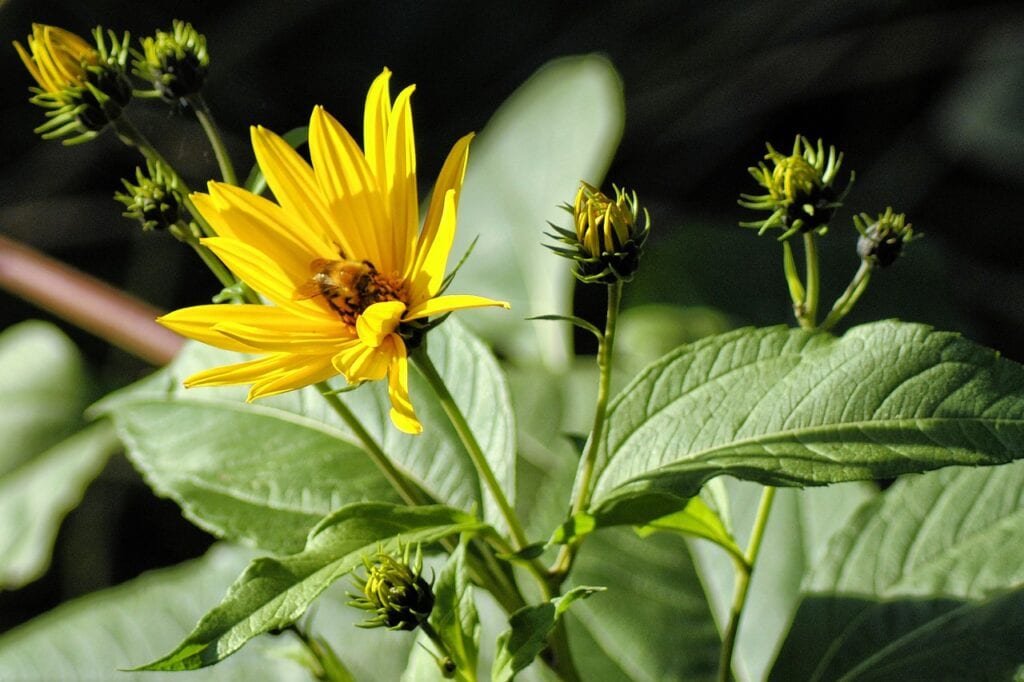
| Color: | Yellow |
| Growing Conditions: | Moist soil |
| Height: | 4–6 inches |
Also known as the wild sunflower or sunchoke, the Jerusalem artichoke is a perennial flower in the sunflower family. It’s a herbaceous plant with yellow flowers and thick leaves. Another main identifying factor is the hairy stalks.
Its tubers are non-toxic and can be ingested by humans and animals in raw, boiled, or roasted form. They also tend to have a nutty flavor similar to chestnuts and can be cooked similarly to potatoes.
The Jerusalem artichoke can be grown either in a flower or vegetable garden. It’s been a culinary favorite in North America for thousands of years. Growing them is effortless, and they can be grown at any time of the year, apart from winter. Ensure you keep an eye on these flowers since they are notorious for spreading aggressively and pushing other plants out.
2. American Bellflower (Campanula americana)
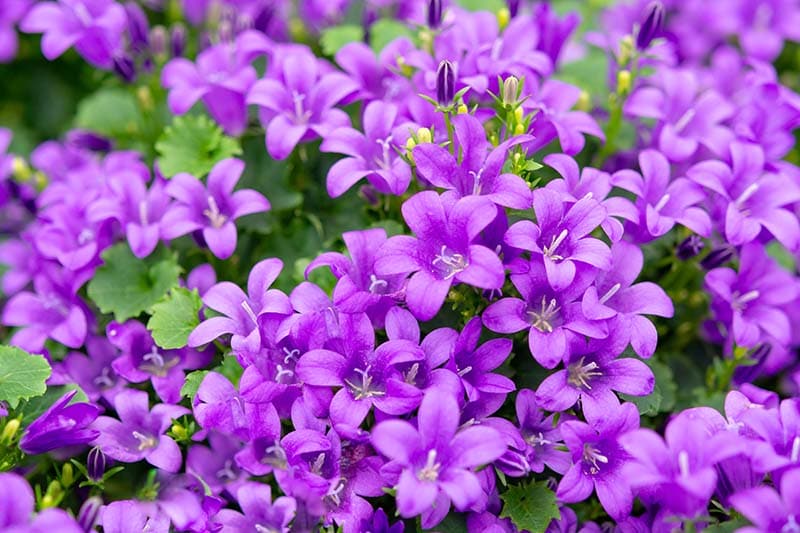
| Color: | Purple/ lilac |
| Growing Conditions: | Shaded, moist areas, including forests, shaded ditches, and stream banks |
| Height: | 4 feet |
American Bellflower is an upright annual native plant in North America. It grows naturally in moist open forests, ditches, and stream banks where the soil is wet and saturated with water. These flowers get their name from their bell-like shape.
American Bellflowers attract pollinators to their garden, including wasps, butterflies, and hummingbirds. They can tolerate more sun during summer without withering or drying out. However, they do well in shaded conditions and should be planted under larger plants, trees, or gazebos.
3. New Jersey Tea (Ceanothus americanus)

| Color: | Lilac, white |
| Growing Conditions: | Shaded areas with moist soil |
| Height: | 3 feet |
The New Jersey Tea is one of the few deciduous shrubs native to North America. It grows slowly and forms a thick crown of purple flowers. During the summer, the shrub is covered by tons of creamy lilac flowers. Sometimes, during late summer, the flowers turn to a blue-violet shade that adds color to the garden.
Pollinators, including butterflies and hummingbirds, are drawn to the New Jersey Tea flower in search of sweet nectar. The native habitat includes woodlands, meadows, and deciduous forests.
4. Maryland Golden-Aster (Chrysopsis mariana)

| Color: | Yellow |
| Growing Conditions: | Shaded areas with moist soil |
| Height: | 3 feet |
Maryland Golden Aster is a perennial plant with dark green foliage and bright yellow flowers. The yellow flowers complement the dark green color of the plant and attract pollinators and other birds to the garden, which aids in the pollination of the nearby crops.
Maryland Golden Aster grows close to the ground throughout the first year until the end of the growing season when it establishes vertical stems. These flowers also produce profusions of bright yellow clusters towards the end of summer.
5. Carolina Spring beauty (Claytonia caroliniana)

| Color: | Violet, white, and yellow |
| Growing Conditions: | Warm, moist soil |
| Height: | 6–12 inches |
The Carolina Springbeauty wildflower is a perennial flower that emerges from the ground during spring as the soil begins to thaw. Leaves from this plant are 1–3 inches long and roughly 3⁄4 of an inch wide. The flowers are relatively small and extremely delicate. They bloom during early spring when the soil is warm enough and all the ice from the soil has thawed.
The Carolina Springbeauty grows in rich woodlands and forests under partial shade and moist soil. The tubers are edible and can be cooked either by boiling or roasting. Spring beauties are hard to find in the wild and are rarely sold in most flower shops.
6. Heal-All (Prunella vulgaris)
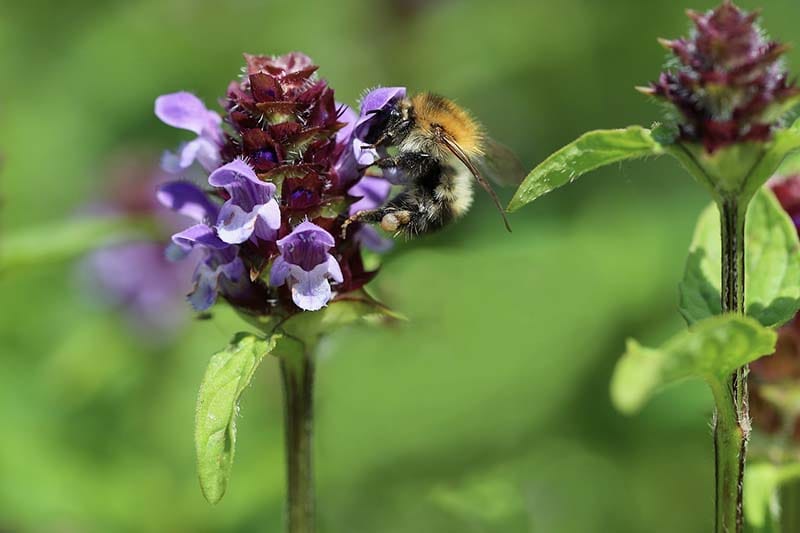
| Color: | Blue |
| Growing Conditions: | Warm, moist soil |
| Height: | 6–12 inches |
The Heal-All, also known as the Herat-of-the-earth flower or Woundwort, is a perennial plant that blooms from late spring to late fall. It grows best under full sun exposure or partial shade and tends to bloom late or not at all when under dark conditions. It’s also one of the most common flowers in New Jersey, and it can be found growing on roadsides, in gardens, and on the edge of forests and woodlands.
Some people grow this flower in their gardens for nutritional and medicinal purposes. The tuber can be eaten raw or cooked, and the leaves and bark can be used to treat several ailments, including herpes, skin lesions, and sore throats.
7. Chicory (Cichorium intybus)
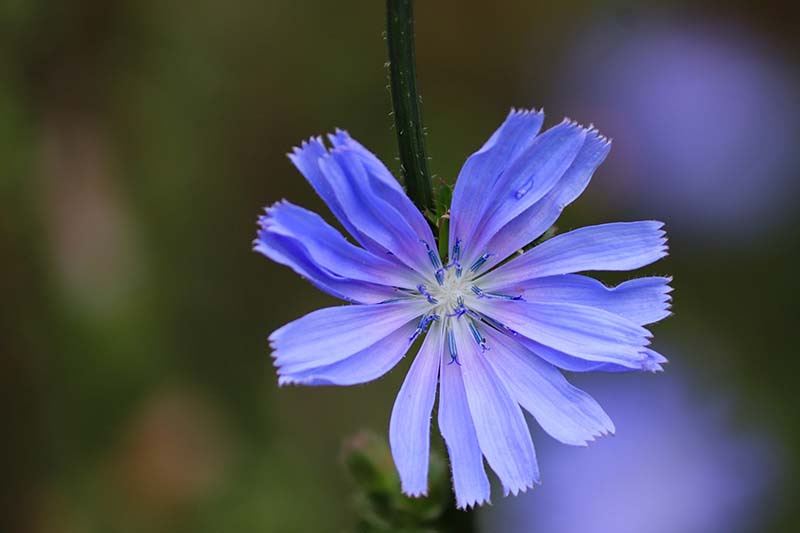
| Color: | Blue |
| Growing Conditions: | Warm, moist soil under full sun exposure |
| Height: | 1–4 inches |
The native chicory flower is perennial and blooms during summer and fall since it needs full sun exposure. Typically, this flower can be found in sunny and dry places along roads, open grass fields, and woodlands. The interesting thing about these flowers is that they bloom for a single day and might only be open for a few hours in hot weather.
Like the Heal-All flower, the Chicory is edible, and its leaves are high in minerals and vitamins. They can be cooked and eaten as a vegetable or raw as a salad. The roots of this plant are also edible. Some people prefer to roast and grind the root and use it as a coffee additive.
8. Common Blue Violet (Viola sororia)
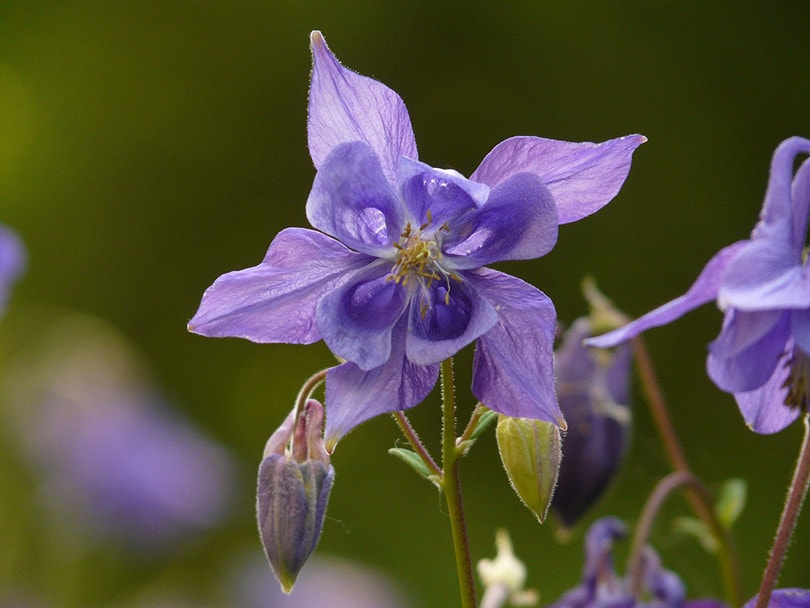
| Color: | Blue |
| Growing Conditions: | Warm, moist soil under full & partial sun exposure |
| Height: | 6–10 inches |
The Common Blue Violet flower, also known as the Woolly Blue Velvet or Hooded Violet, is a perennial wildflower found in New Jersey. One of the reasons why it’s so popular in most lawns and gardens is because it attracts bees, caterpillars, deer, doves, and ants.
This wildflower can self-fertilize inside the plant without any external help. The fertilized seeds shoot out from their capsules as far as 9 feet away.

Conclusion
Wildflowers provide seeds, pollen, and a food source for pollinators and other small animals. They also increase the aesthetics wherever they grow without using any chemicals. If you live in New Jersey, you can transplant these native wildflowers in your garden from forests, meadows, and wetlands without much effort.
Once you know the kind of wildflowers you want to plant in your garden, ensure they are not poisonous, especially if you have small kids or pets. You can also grow some of these flowers to use as medicine.
Featured Image Credit: Hans Benn, Pixabay
Contents
